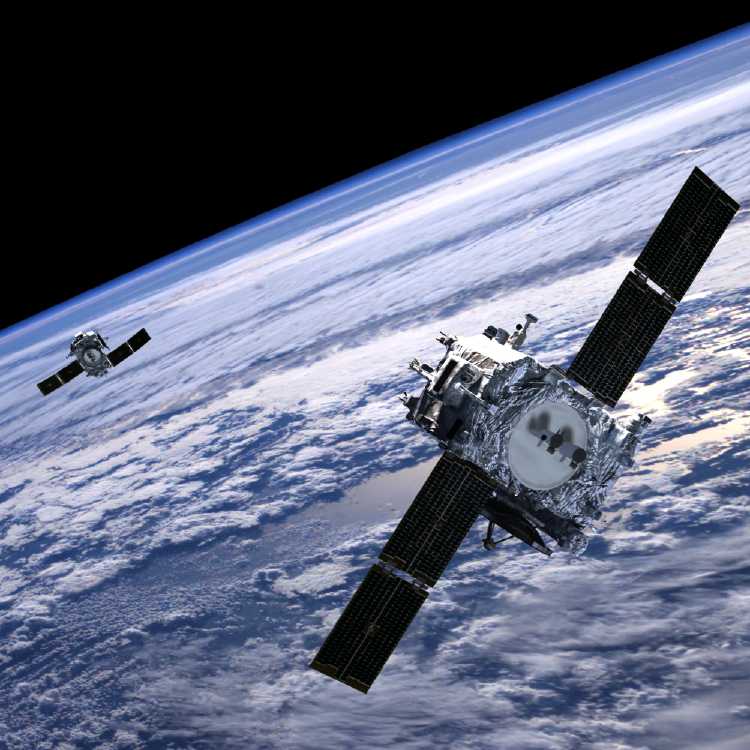The Solar Terrestrial Relations Observatory
 Click to enlarge NASA/JHU APL artist's concept of the twin STEREO observatories opening their solar panels. |
Their mission is to study those huge eruptions from the Sun that can damage satellites, disrupt electrical systems on Earth and endanger spacewalking astronauts.
Scientists want to know how the solar outbursts form so they can predict their future appearances.
Solar flares. Referred to as a solar flare, an ordinary one of these eruptions can belch a billion tons of the Sun's atmosphere out across space at a million miles per hour.
Reaching Earth, these flares trigger the aurora borealis – the Northern Lights – which are those broad luminous display of lights seen floating high above Earth's Northern Hemisphere upper latitudes. The same kind of lights in the Southern Hemisphere are known as the aurora australis.
Working in tandem in slightly different orbits, the two satellites give us a three-dimensional view of the Sun.
To view images created by the STEREO spacecraft, viewers need 3-D glasses like those worn to watch movies such as the "Creature From the Black Lagoon."
| Sun and Sunspots Index Page | |||||
|---|---|---|---|---|---|
| Learn More about Our Sun and Sunspots and Their Effects on Earth |
| Read more Space Today Online stories about the Solar System | |||||
|---|---|---|---|---|---|
| Star: | The Sun | ||||
| Inner Planets: | Mercury | Venus | Earth | Mars | |
| Outer Planets: | Jupiter | Saturn | Uranus | Neptune | Pluto |
| Other Bodies: | Moons | Asteroids | Comets | ||
| Beyond: | Pioneers | Voyagers | |||
| Top of this page | Solar System index | Space Today Online cover |